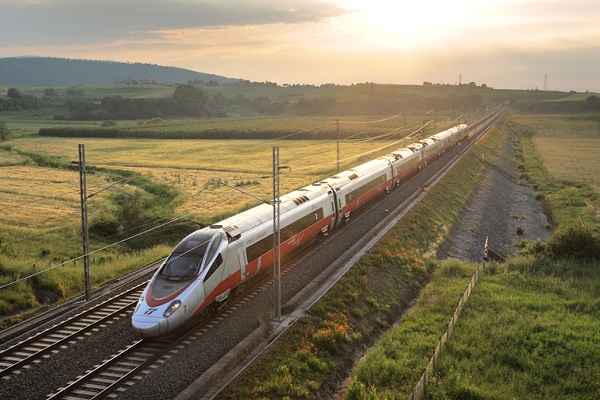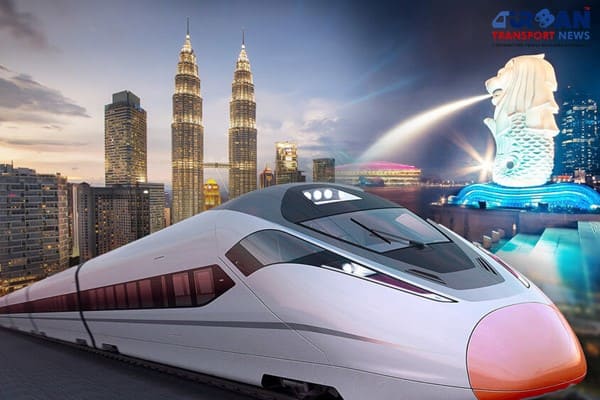 Understanding the Critical Role of Systems Approach in Urban Railway Projects
Understanding the Critical Role of Systems Approach in Urban Railway Projects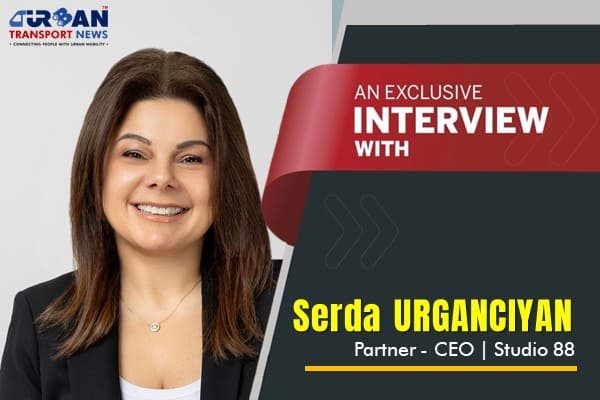 Exclusive Interview with Ms. Serda Urganciyan, Partner-CEO at Studio 88 Architecture
Exclusive Interview with Ms. Serda Urganciyan, Partner-CEO at Studio 88 Architecture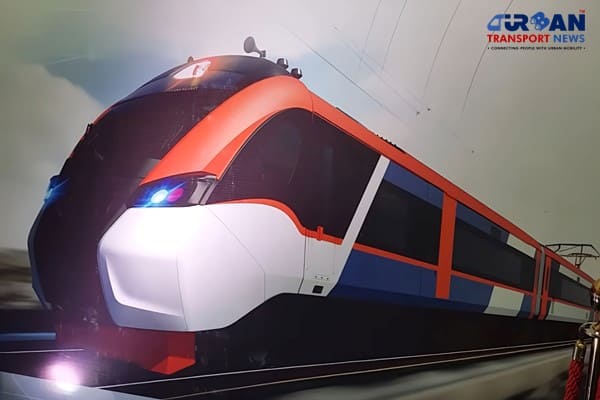 Titagarh Rail Systems set to deliver first sleeper Vande Bharat Train by late 2025
Titagarh Rail Systems set to deliver first sleeper Vande Bharat Train by late 2025 UAE's First Vertiport gets Operational approval, A game-changer in Autonomous Transportation
UAE's First Vertiport gets Operational approval, A game-changer in Autonomous Transportation Nafisah Aslam-Zainudeen: Inspiring the Next Generation of Female Engineers
Nafisah Aslam-Zainudeen: Inspiring the Next Generation of Female Engineers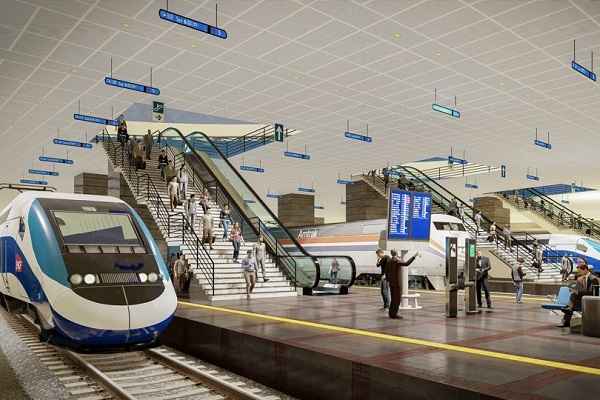 DRA-DMRC JV awarded major contract for redevelopment of Ahmedabad Railway Station
DRA-DMRC JV awarded major contract for redevelopment of Ahmedabad Railway Station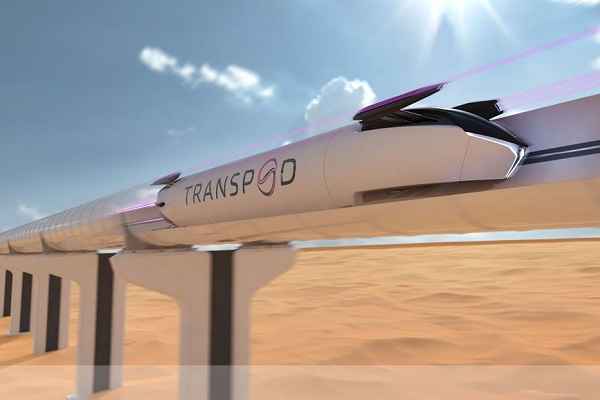 Revolutionizing Transportation: Hyperloop Technology in Saudi Arabia
Revolutionizing Transportation: Hyperloop Technology in Saudi Arabia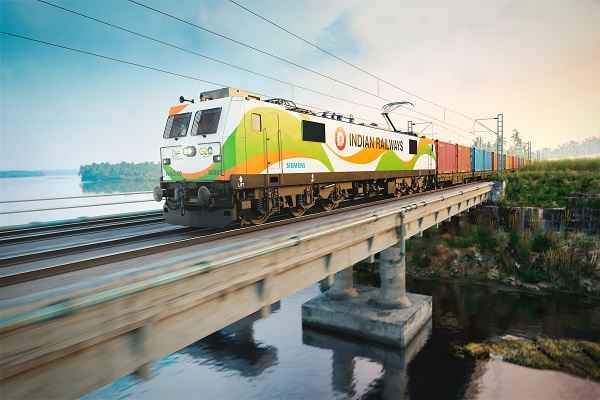 India is not just a market, it is becoming a beacon of hope for the future: Siemens AG
India is not just a market, it is becoming a beacon of hope for the future: Siemens AGSATEBA acquires Rail Business of De Bonte Group in Belgium
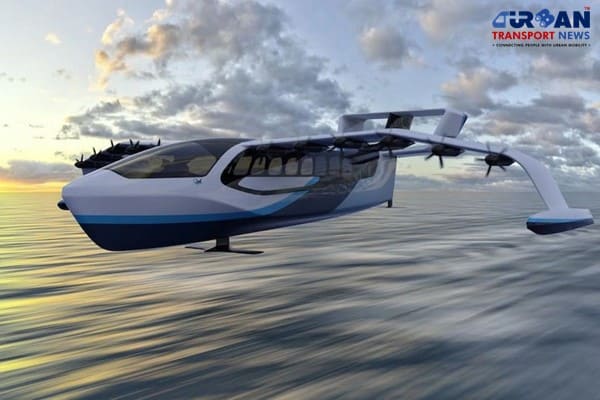 Regent to launch High-Speed Seagliders to transform coastal transportation in UAE
Regent to launch High-Speed Seagliders to transform coastal transportation in UAE
Exclusive Interview with Dr. Ramy Shaltout, Coventry University on halt of UK's HS2 project
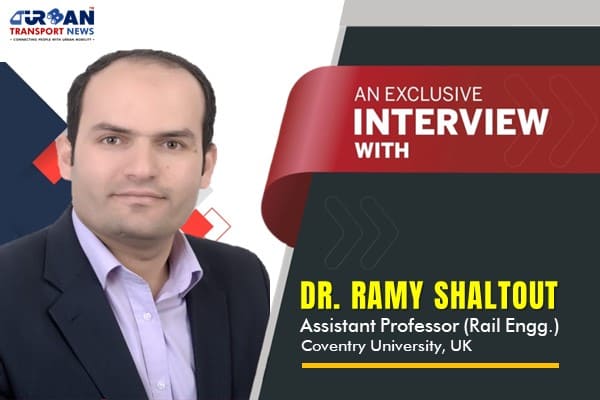
Dr. Ramy Shaltout (BSc, MSc, PhD) is a railway systems expert. Currently working as an assistant professor in Rail engineering, at Coventry University. Previously, Ramy has been working as an associate professor of railway design at the German University in Cairo and Zagazig University. Dr. Shaltout has been working for 2 years as a Research Associate at NewRail Center of Railway Research -Newcastle University. Dr. Shaltout was a member of the infrastructure group in NewRail. He worked for 4 years in the Centro de Investigación de Tecnología de Vehículos Vehicle Technology Center at the Universidad Politécnica de Valencia. His PhD was in the design and modeling of a computational tool used for the dynamic simulation of railway vehicle systems which is developed using Multibody systems formulation based on the Multibody techniques.
In a recent e-mail interaction with Urban Transport News, Dr. Shaltout shared his concerns and opinions on the impact of UK Prime Minister Rishi Sunak's decision to cancel the Country's ambitious high-speed rail project "HS2" recently.
Please share some key information about HS2 i.e. History, Objectives and Benefits of HS2.
After the success of High speed 1, the United Kingdom (UK) has recognised the importance of high speed rail and tasted its importance. In 2009, the Labour Party established a non-departmental government body, the High speed 2 Ltd (HS2), that was initially funded by the Department for Transport (DfT). In March 2010 the Transport secretary presented the official plans for the new HS2 line. The line had the Y-shaped network starting with London to Birmingham and diverting to the North through the western leg to Manchester and to the east through eastward leg to Leeds via the East Midlands and Sheffield. It is worth mentioning that the eastern leg was then scrapped by the government in 2021.
High Speed 2 (HS2) is the biggest infrastructure investment in the UK for a generation, connecting 30 million people and eight of the UK’s largest cities. The initial plans of HS2 have two phases:
- Phase 1 - London to the West Midlands
- Phase 2a - West Midlands to Crewe
- Phase 2b - Crewe to Manchester and West Midlands to Leeds
The first services of Phase 1 were expected to start in 2026. The sections for the second phase from Birmingham to Manchester and Leeds were expected to be operational from 2033.
Looking at the existing rail network in the UK, HS2 aimed to help moving long-distance traffic to improve the local passenger and freight services as a response to the increased demand on the rail transport - data from DFT revealed a significant increase in the passenger number compared to the numbers when HS2 was approved in 2012. It is also improving the rail services at 73 stations across the country in which 54 are stations not served by HS2 trains.
HS2’s main objectives were to increase the capacity as the capacity was expected to double between Manchester and London. HS2 was expected to carry 576,000 passenger per day to reduce the overcrowding of the existing network.
In addition, HS2 aims to free the route for more freight services and reduce the number of lorries on the roads knowing that each freight train removes up to 76 lorries from our roads. This will have a direct impact on the carbon emissions as rail produces 76% less carbon dioxide emissions than the equivalent road journey.
Some other benefits of the HS2 can be summarised in the following points
- HS2 will open up new possibilities of leisure travels and will provide a direct link with Continental Europe through High Speed 1 (HS1).
- HS2 supports 30,000 jobs, but its benefits go far beyond simply re-employing members of the existing workforce. HS2 and its supply chain have recruited and trained 100s of UK graduates, over 1,000 apprentices and employed over 3,000 people not previously in employment. This has created a cohort of railway specialists who will serve the country well beyond the current project.
- It will increase the reliability of rail services for passengers using the rail network.
- It helps generate £92bn in benefits overall. Over 80% if these benefits could be translated directly into higher GDP.
- It is also worth mentioning that HS2 ltd has put 7 strategic objectives in the published corporate plan for HS2 as follows:
- Strategic goal 1: We will be a catalyst for economic growth.
- Strategic goal 2: We will create a step change for rail capacity and connectivity.
- Strategic goal 3: We will be good neighbours and protect the natural environment.
- Strategic goal 4: We will foster skills and create and sustain employment opportunities.
- Strategic goal 5: We will set new standards for health, safety and security for the construction and operation of the railway.
- Strategic goal 6: We will deliver value for money to the taxpayer.
- Strategic goal 7: We will set new standards for customer experience
Why has HS2 spiralled in cost and been delayed?
Many concerns were raised about the total cost of the HS2. But the spiral increase in the cost of the project is still the subject of controversy. The initial cost was around £33.5bn in 2011, while in 2015 the figure rose to around £56bn. In January of this year, a government review led by former HS2 chairman Doug Oakervee concluded there was “considerable risk” that the price tag could increase by up to 20% to as much as £106bn.
The increase in the cost in my personal opinion is due to several factors. I will put these factors in categories so it can be intercorrelated.
A) Planning and construction factors
- There is a significant increase in the construction materials over the last years. For example, the prices of ready mixed concrete increased by 18.2% between 2021 and 2022 and with 94.2% compared to the prices in 2017. The HS2 is designed to be built over concrete slab tracks which is different from the traditional ballasted track.
- Risk and uncertainty factors as HS2 Ltd has been criticised for taking into account enough risk and uncertainty in the initial calculations.
- The planning has an ambitious objective that was to take account of plans for Northern Powerhouse Rail – another high-speed line connecting the cities of the North.
- The significant increase in land and property prices especially after Covid. HS2 Ltd has to purchase land and property rights along the route which doesn't come cheap. HS2 Ltd's land and property calculations, which it was using as recently as 2015-16, were badly underestimated.
- The alignment of HS2 line required moving rivers and tunnels and viaducts that are not that cheap. It also needed environmental mitigations on a small island – especially when track and stations are built into the heart of big cities, as well as through well-heeled marginal constituencies.
B) Design and Operational factors
- HS2 was designed to run with trains with an operating speed of 360 km/hr that is faster than any train in Europe but still below the speeds in China.
- Number of trains per hour are planned to be 18 trains/hr which is also higher than any other HS line in the world.
- The numerous types of technology and innovations used for the project are unique and it has its cost for implementation (AI applications / Digital twins/ Condition monitoring systems/ Communication. Etc)
C) Other factors
- The rise in construction inflation rates. Many different parameters influenced the rise in the construction material prices including Brexit, Covid and the invasion of Ukraine. Compared to last summer prices, the Inflation in building materials reached around 26%. For example, the price of supply of steel bars for concrete reinforcement increased by 30%.
- Political delays have also introduced a big additional cost to the project. For example, the decision about Euston station has introduced an increase of £1.2bn to the initial cost.
- Labour cost (especially after Brexit), HS2 project requires more professional from overseas as announced by legal counsel at the Association of Professional Staffing Companies Tania Bowers, this will add an additional cost for their applications and visa fees.
- Delays in the construction due to unforeseen resistance, as reported there were more than 21 areas affected by the infrastructure project containing lots of religious places. This has caused an additional delay due to the seeking of consent from the affected properties.
What are the repercussions of halting this link to Manchester? Does the north-south divide become even bigger?
There are several impacts for stopping the project which can be summarised in the following points
A) Environmental impact
UK has signed for Paris agreement and COP 26 to look for effective measures to reduce Greenhouse gases (GHGs) accordingly. As announced by PM Mr. Rishi Sunak, UK committed to reduce the carbon emissions by more than 60 % and this represents a huge challenge compared to other countries. Halting these plans will deaccelerate the process to reaching these targets, knowing Transportation sector is responsible for 27% of the GHGs among other sectors then we must support these plans and actions that promotes the reduction of CO2 in this sector where the rail is only representing 1.4 % while being responsible for transporting 8 % of the journeys.
B) Impact on the circular economy
The HS2’s vision was announced to be a catalyst for economic growth by adopting the circular economy principles through creating new job opportunities. These principles were the HS2 has provided jobs for more than 2000 business. 70% of them SMEs and 99% of which are based in the UK. Stopping the plans for HS2 will have a negative impact on these businesses. As there is high degree of uncertainty in forecasting the UK macroeconomy and hence the construction sector, there is an elevated risk of having economic backdrops as a consequence of scrapping the HS2 plans.
C) Impact on south-north and levelling up plans
Investment in infrastructure projects is urgently required in northern urban areas of England to guarantee its benefits throughout the connectivity from east-west by reliable and efficient train services. Phase 2b of HS2 project was representing a significant portion of the Northern Powerhouse Rail project with 40% of the new track kilometres earmarked for use in the project. In my opinion by axing this leg, the Northern Powerhouse Rail project could be at risk.
How do other countries manage to complete major rail projects, yet the UK struggles?
The current situation of the UK highspeed is miles behind other countries around the world. According to the international union of Railways (UIC), UK only operates 71 miles of High-speed rail. And by completion of HS2 this number will almost be doubled. In comparison, France planned lines stretching over 1,635 miles. Spain is still the biggest high-speed rail network in Europe - with operating HS lines of 1,285 miles that expected to reach over 3,453 miles by including the new planned lines. While China is still impressing the whole world with 3,937 miles of high-speed lines. In addition to 2,712 miles under construction and a 1,813 miles of future planned lines.
These advances in the construction and extension of High-speed rails in other countries due to the number of resources that we use here in the UK that are linked with planning; the stakeholder engagement, environmental matters, all the consents that are needed for the completion of the project that leads to slowing down the project. This will add an additional cost to the project due to the increase in manpower and delays of getting theses consents. In other countries, the government will seek all the consents required before awarding the contract. This also justifies why the cost of construction per kilometre of High-speed lines in the UK is almost 10 times the cost in European countries. According to the benchmarking report of European Court of Auditors from 2018, the average cost is even lower on the continent at £25M per kilometre.
Can alternative transport projects be as effective as HS2?
The rail transport is still the most efficient way of transporting passengers. In terms of energy per capita, the electrified rail transport requires only 1/10th of the energy required for transporting individuals using alternative transport modes like the cars or aeroplanes. In terms of the carbon emissions, railways are representing 8% of global passenger and freight transport activity (in passenger km/tonne km), railway represents only 2% of the transport sector emissions.
Looking at the time saving and passenger experience, the current trip between London-Manchester is covered by trains in 2 hrs and 6 minutes, this time can be reduced by 55 mins when using High speed rails. So, in my opinion no other transportation mode can compete with the HSR except for the aeroplanes but we need to consider the difference in ticket prices between the two modes.
Does the UK have enough skilled workers to complete HS2?
The construction sector in the UK is facing dramatic changes and civil engineering is listed on the jobs of shortage occupation. The impact of Brexit has also meant further losses to the available skillsets. According to HS2 labour and skills demand and supply forecasting and analysis report, there is a gap for the demand of the technically highly-skilled workers.
According to the goal number 4 of the strategic goals of HS2 ltd “We will foster skills and create and sustain employment opportunities”, it takes into account analysing skills mismatches to understand where pressures on skills may arise, taking into account the workforce required to deliver HS2 and the wider workforce requirements.
As a result of Covid-19 the estimations showed that construction employment has fallen by around 5.6% in 2020 to just under 2.6 million. And according to the HS2 labour and skills demand and supply forecasting and analysis report, the expected annual expansion in the construction outputs of 1.7% over 2024 to 2040 which forecast to coincide with a 1.1% expansion in UK construction sector labour demand over the same period. The report also explains different factors that can contribute to the available supply of appropriately skilled construction workers in a given region at any one time.
Will significant amounts of money have been wasted with the cancellation of the northern section of HS2?
An initial estimation of the losses due to axing the Manchester leg reveals £2.3bn having already been invested in stage two of the line including £600m of public money spent buying up land and properties for HS2 in the north of England.
However, there is uncertainty around the actual estimate of money losses due to the decision made by the PM.
How will the decision of Rishi Sunak affect the growth & economy of the UK's major infra projects?
Scrapping the Manchester leg could turn out to be a big mistake with potential consequences on rail industry and UK circular economy. It also puts UK reputation of completing this kind of infrastructure projects at risk.
It's unfair when individuals solely emphasize cost without considering the added value of HS2. It's vital to always keep in mind that HS2 is not an isolated project; instead, it is an integral part of the UK rail network designed to improve and facilitate customer journeys.





